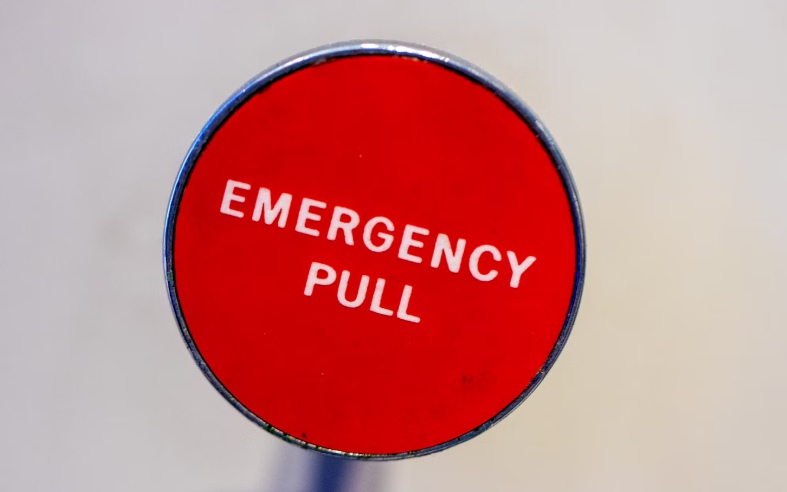
@ShahidNShah


Medical emergencies rarely announce themselves. One moment, you’re making breakfast or driving to work—and the next, everything changes. These moments don’t always happen in hospitals or during a crisis alert. They can unfold in the quietest corners of your day.
But what if those life-altering emergencies could be avoided altogether—or at least caught before they became serious? That’s the direction we’re heading in. Thanks to smart, everyday technology, silent helpers are already working behind the scenes to keep you safer than you realize.
Interesting, right? Read on because this article will explore how today’s smart tools are quietly helping reduce medical crises. Let’s begin!
Awareness is often the first step toward safety. And sometimes, it begins with a story you didn’t expect to change anything. Maybe it was a headline you saw while scrolling or a quick update about something that happened nearby.
But these stories do more than inform—they teach. A report about a recent car crash, for example, might include small but important details: slippery roads, a sharp curve, a missed stop sign. When you come across these kinds of updates, you begin to connect the dots.
You realize those same road conditions exist on your own drive home. And just like that, you start slowing down in the rain, avoiding left turns at busy intersections, or staying more alert at night.
That’s why more and more legal platforms and accident-focused sites are putting more effort into building real-time reporting pages. They do help people to get compensation after serious incidents, but they also double as learning tools for the rest.
Technology isn’t only about reacting to a crisis. A lot of it now works quietly in the background, helping you avoid danger in the first place. Smartwatches, for example, can monitor your heart rate and alert you when something seems off—even before you feel it.
Some can even detect falls or sudden stops in movement and automatically call for help. This is especially helpful for older adults or anyone recovering from an injury. Even the car you drive can act as a guard.
Newer models often come with safety features like automatic braking, drowsiness detection, or lane warnings. These tools aren’t just fancy add-ons—they actively stop accidents before they happen. And the fewer accidents there are, the fewer trips there are to the emergency room.
Even after all the precautions, sometimes, things do go wrong. And that’s where response time becomes everything. Today, you can talk to a doctor without stepping foot into a clinic. Telehealth apps make it possible to get advice from a real person, whether you’re at home, at work, or somewhere in between.
That kind of access can save you time, money, and unnecessary stress. You can quickly find out if what you’re feeling needs a hospital visit—or if rest and care at home will do. Some phones and smartwatches are even built to sense when an emergency might be happening.
If you fall or get into a crash, they can send alerts with your location to emergency contacts or local responders. You may not always be able to call for help yourself, especially if you’re in shock or injured.
But having that safety net in your pocket can help others find you faster. For those who live alone or travel often, this can be a lifesaver.
One of the most powerful roles technology plays is helping people learn. It is not in a formal classroom way but through everyday exposure to useful, life-saving information. The more you read, listen, or scroll through content designed to teach—not scare—the more confident and prepared you become.
A quick article about heat exhaustion might make you carry water during your morning jog. A short post about signs of a stroke could help you act faster if someone near you starts acting strange. These aren’t big lessons, but they stick.
Some platforms go a step further by sharing real experiences. They talk about what went wrong and what could’ve gone differently. These aren’t meant to make you anxious. They’re meant to give you a little more control in situations that often feel unpredictable.
Technology is helping reduce medical emergencies in ways that feel almost invisible—until they’re not. Whether it’s a warning on your watch, a quick update on your phone, or a lesson you didn’t realize you needed, these small tools and moments build a safer life around you.
The best part? You don’t have to be tech-savvy to benefit. You just need to stay aware, be open to learning, and use what’s already available.

Internist and psychiatrist Muhamad Aly Rifai discusses his article, "How data accuracy failures are costing lives and money in health care." He explores the consequences of inaccurate data in health …
Posted Apr 2, 2025 Healthcare Data Integrity
Connecting innovation decision makers to authoritative information, institutions, people and insights.
Medigy accurately delivers healthcare and technology information, news and insight from around the world.
Medigy surfaces the world's best crowdsourced health tech offerings with social interactions and peer reviews.
© 2025 Netspective Foundation, Inc. All Rights Reserved.
Built on Apr 4, 2025 at 12:22pm